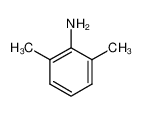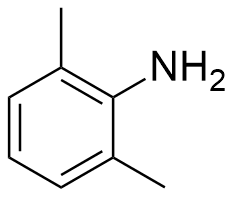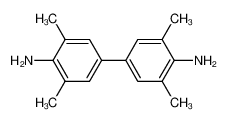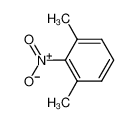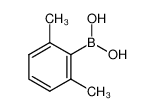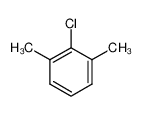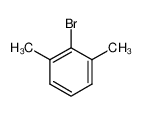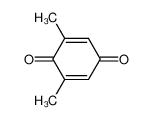| Product name | 2,6-dimethylaniline |
|---|
| Product number | - |
|---|---|
| Other names | o-Xylidine |
| Identified uses | For industry use only. |
|---|---|
| Uses advised against | no data available |
| Company | MOLBASE (Shanghai) Biotechnology Co., Ltd. |
|---|---|
| Address | Floor 4 & 5, Building 12, No. 1001 North Qinzhou Road, Xuhui District, Shanghai, China |
| Telephone | +86(21)64956998 |
| Fax | +86(21)54365166 |
| Emergency phone number | +86-400-6021-666 |
|---|---|
| Service hours | Monday to Friday, 9am-5pm (Standard time zone: UTC/GMT +8 hours). |
Acute toxicity - Oral, Category 4
Acute toxicity - Dermal, Category 4
Skin irritation, Category 2
Acute toxicity - Inhalation, Category 4
Specific target organ toxicity – single exposure, Category 3
Carcinogenicity, Category 2
Hazardous to the aquatic environment, long-term (Chronic) - Category Chronic 2
2.2 GHS label elements, including precautionary statements| Pictogram(s) |    |
|---|---|
| Signal word | Warning |
| Hazard statement(s) | H302 Harmful if swallowed H312 Harmful in contact with skin H315 Causes skin irritation H332 Harmful if inhaled H335 May cause respiratory irritation H351 Suspected of causing cancer H411 Toxic to aquatic life with long lasting effects |
| Precautionary statement(s) | |
| Prevention | P264 Wash ... thoroughly after handling. P270 Do not eat, drink or smoke when using this product. P280 Wear protective gloves/protective clothing/eye protection/face protection. P261 Avoid breathing dust/fume/gas/mist/vapours/spray. P271 Use only outdoors or in a well-ventilated area. P201 Obtain special instructions before use. P202 Do not handle until all safety precautions have been read and understood. P273 Avoid release to the environment. |
| Response | P301+P312 IF SWALLOWED: Call a POISON CENTER/doctor/…if you feel unwell. P330 Rinse mouth. P302+P352 IF ON SKIN: Wash with plenty of water/... P312 Call a POISON CENTER/doctor/…if you feel unwell. P321 Specific treatment (see ... on this label). P362+P364 Take off contaminated clothing and wash it before reuse. P332+P313 If skin irritation occurs: Get medical advice/attention. P304+P340 IF INHALED: Remove person to fresh air and keep comfortable for breathing. P308+P313 IF exposed or concerned: Get medical advice/ attention. P391 Collect spillage. |
| Storage | P403+P233 Store in a well-ventilated place. Keep container tightly closed. P405 Store locked up. |
| Disposal | P501 Dispose of contents/container to ... |
none
3.Composition/information on ingredients 3.1 Substances| Chemical name | Common names and synonyms | CAS number | EC number | Concentration |
|---|---|---|---|---|
| 2,6-dimethylaniline | 2,6-dimethylaniline | 87-62-7 | none | 100% |
Consult a physician. Show this safety data sheet to the doctor in attendance.
If inhaledFresh air, rest. Refer for medical attention.
In case of skin contactRemove contaminated clothes. Rinse and then wash skin with water and soap. Refer for medical attention .
In case of eye contactRinse with plenty of water for several minutes (remove contact lenses if easily possible).
If swallowedRinse mouth. Refer for medical attention .
4.2 Most important symptoms/effects, acute and delayedMay be fatal if inhaled, swallowed or absorbed through skin. Vapor or mist irritating to the eyes, mucous membranes and upper respiratory tract; causes skin irritation. Absorption into body leads to the formation of methemoglobin which, in sufficient concentration, may cause cyanosis. Onset may be delayed 2-4 hours or longer. Exposure can cause nausea, dizziness, headache, damage to the eyes, and blood effects. (USCG, 1999)
4.3 Indication of immediate medical attention and special treatment needed, if necessaryImmediate First Aid: Ensure that adequate decontamination has been carried out. If patient is not breathing, start artificial respiration, preferably with a demand-valve resuscitator, bag-valve-mask device, or pocket mask, as trained. Perform CPR if necessary. Immediately flush contaminated eyes with gently flowing water. Do not induce vomiting. If vomiting occurs, lean patient forward or place on left side (head-down position, if possible) to maintain an open airway and prevent aspiration. Keep patient quiet and maintain normal body temperature. Obtain medical attention. /Aromatic hydrocarbons and related compounds/
5.Fire-fighting measures 5.1 Extinguishing media Suitable extinguishing mediaSuitable extinguishing media: Use water spray, alcohol-resistant foam, dry chemical, or carbon dioxide.
5.2 Specific hazards arising from the chemicalSpecial Hazards of Combustion Products: Container explosion may occur under fire conditions. Emits toxic fumes under fire conditions. (USCG, 1999)
5.3 Special protective actions for fire-fightersWear self-contained breathing apparatus for firefighting if necessary.
6.Accidental release measures 6.1 Personal precautions, protective equipment and emergency proceduresUse personal protective equipment. Avoid dust formation. Avoid breathing vapours, mist or gas. Ensure adequate ventilation. Evacuate personnel to safe areas. Avoid breathing dust. For personal protection see section 8.
6.2 Environmental precautionsPersonal protection: chemical protection suit and filter respirator for organic gases and vapours adapted to the airborne concentration of the substance. Do NOT let this chemical enter the environment. Collect leaking and spilled liquid in sealable containers as far as possible. Absorb remaining liquid in sand or inert absorbent. Then store and dispose of according to local regulations.
6.3 Methods and materials for containment and cleaning upACCIDENTAL RELEASE MEASURES: Personal precautions, protective equipment and emergency procedures: Use personal protective equipment. Avoid breathing vapors, mist or gas. Ensure adequate ventilation. Remove all sources of ignition. Evacuate personnel to safe areas. Beware of vapors accumulating to form explosive concentrations. Vapors can accumulate in low areas. Environmental precautions: Prevent further leakage or spillage if safe to do so. Do not let product enter drains. Discharge into the environment must be avoided. Methods and materials for containment and cleaning up: Contain spillage, and then collect with an electrically protected vacuum cleaner or by wet-brushing and place in container for disposal according to local regulations. Keep in suitable, closed containers for disposal.
7.Handling and storage 7.1 Precautions for safe handlingAvoid contact with skin and eyes. Avoid formation of dust and aerosols. Avoid exposure - obtain special instructions before use.Provide appropriate exhaust ventilation at places where dust is formed. For precautions see section 2.2.
7.2 Conditions for safe storage, including any incompatibilitiesSeparated from strong oxidants, acids, acid anhydrides, acid chlorides, hypochlorites, halogens and food and feedstuffs. Well closed. Store in an area without drain or sewer access.Keep container tightly closed in a dry and well-ventilated place. Containers which are opened must be carefully resealed and kept upright to prevent leakage.
8.Exposure controls/personal protection 8.1 Control parameters Occupational Exposure limit valuesRecommended Exposure Limit: 10-hour Time-Weighted Average: 2 ppm (10 mg/cu m). Skin.
Biological limit valuesno data available
8.2 Appropriate engineering controlsHandle in accordance with good industrial hygiene and safety practice. Wash hands before breaks and at the end of workday.
8.3 Individual protection measures, such as personal protective equipment (PPE) Eye/face protectionSafety glasses with side-shields conforming to EN166. Use equipment for eye protection tested and approved under appropriate government standards such as NIOSH (US) or EN 166(EU).
Skin protectionWear impervious clothing. The type of protective equipment must be selected according to the concentration and amount of the dangerous substance at the specific workplace. Handle with gloves. Gloves must be inspected prior to use. Use proper glove removal technique(without touching glove's outer surface) to avoid skin contact with this product. Dispose of contaminated gloves after use in accordance with applicable laws and good laboratory practices. Wash and dry hands. The selected protective gloves have to satisfy the specifications of EU Directive 89/686/EEC and the standard EN 374 derived from it.
Respiratory protectionWear dust mask when handling large quantities.
Thermal hazardsno data available
9.Physical and chemical properties| Physical state | Colorless to reddish yellow liquid |
|---|---|
| Colour | Yellow liquid |
| Odour | Characteristic odor |
| Melting point/ freezing point | 211°C(dec.)(lit.) |
| Boiling point or initial boiling point and boiling range | 216°C(lit.) |
| Flammability | Combustible. Gives off irritating or toxic fumes (or gases) in a fire. |
| Lower and upper explosion limit / flammability limit | no data available |
| Flash point | 91°C(lit.) |
| Auto-ignition temperature | 405°C |
| Decomposition temperature | no data available |
| pH | no data available |
| Kinematic viscosity | 1.7 mPa.s (dynamic) at 50°C |
| Solubility | In water:7.5 g/L (20 ºC) |
| Partition coefficient n-octanol/water (log value) | log Kow = 1.84 |
| Vapour pressure | <0.01 mm Hg ( 20 °C) |
| Density and/or relative density | 0.9842 |
| Relative vapour density | 4.17 (Relative to Air) |
| Particle characteristics | no data available |
no data available
10.2 Chemical stabilityStable under recommended storage conditions.
10.3 Possibility of hazardous reactionsThis chemical is a combustible liquid. /Xylidines/The vapour is heavier than air.2,6-XYLIDINE reacts with strong oxidizing agents [Handling Chemicals Safely 1980 p. 964]. Neutralizes acids in exothermic reactions to form salts plus water. May be incompatible with isocyanates, halogenated organics, peroxides, phenols (acidic), epoxides, anhydrides, and acid halides. Flammable gaseous hydrogen may be generated in combination with strong reducing agents, such as hydrides.
10.4 Conditions to avoidno data available
10.5 Incompatible materialsIncompatible materials: Acids, acid chlorides, acid anhydrides, oxidizing agents, chloroformates, halogens.
10.6 Hazardous decomposition productsWhen heated to decomposition it emits toxic fumes of /nitrogen oxides/.
11.Toxicological information Acute toxicity- Oral: LD50 Rat oral 840 mg/kg
- Inhalation: no data available
- Dermal: no data available
no data available
Serious eye damage/irritationno data available
Respiratory or skin sensitizationno data available
Germ cell mutagenicityno data available
CarcinogenicityEvaluation: There is inadequate evidence in humans for the carcinogenicity of 2,6-dimethylaniline. There is sufficient evidence in experimental animals for the carcinogenicity of 2,6-dimethylaniline. Overall evaluation: 2,6-dimethylaniline is possibly carcinogenic to humans (Group 2B).
Reproductive toxicityno data available
STOT-single exposureno data available
STOT-repeated exposureno data available
Aspiration hazardno data available
12.Ecological information 12.1 Toxicity- Toxicity to fish: no data available
- Toxicity to daphnia and other aquatic invertebrates: no data available
- Toxicity to algae: no data available
- Toxicity to microorganisms: no data available
AEROBIC: A Warburg respirometer study utilizing an activated sludge seed and 6 hr of incubation resulted in a 2,6-xylidine depletion of 33-37% at a concentration of 20 ppm(1). In a 6 week soil degradation study using (14)C-labelled 2,6-xylidine, 8.4% of applied radioactivity was recovered via CO2 evolution in non-autoclaved soil while 0% CO2 evolution occurred in autoclaved soil(2). In a soil degradation study conducted in glass vessels using Chernozem soil, 2,6-xylidine (at 500 mg/L) was degraded after 3 days of incubation with >90% recovered in transformation products(3). Using OECD Guideline 301F (Ready Biodegradability: Manometric Respirometry Test), 2,6-xylidine (at 100 mg/L) reached 4, 8, 25, 38 and 69% of its theoretical BOD after 7, 13, 36, 42 and 70 days. respectively(4); these results indicated that 2,6-xylidine was not readily biodegradable according to OECD criteria, however, it is biodegradable after extended adaptation(4). In another OECD Guideline 301F study, 2,6-xylidine (at 100 mg/L) showed no bidegradation after 33 day(4). Using OECD Guideline 302B (Inherent biodegradability: Zahn-Wellens/EMPA Test) and an industrial activated sludge seed, 83% of initial 2,6-xylidine was removed from the aqueous test system after 11 days, however, the substance was mainly removed via volatilization(4). 2,6-Xylidine, present at 100 mg/L, reached 0% of its theoretical BOD in 4 weeks using an activated sludge inoculum at 30 mg/L in the Japanese MITI test(5).
12.3 Bioaccumulative potentialAn estimated BCF value of 8 was calculated for 2,6-xylidine in fish(SRC), using a log Kow of 1.84(1) and a regression-derived equation(2). According to a classification scheme(3), this BCF value suggests that bioconcentration in aquatic organisms is low(SRC).
12.4 Mobility in soilUsing a structure estimation method based on molecular connectivity indices(1), the Koc of 2,6-xylidine can be estimated to be 190(SRC). According to a classification scheme(2), this estimated Koc value suggests that 2,6-xylidine is expected to have moderate mobility in soil. Aromatic amines are expected to bind strongly to humus or organic matter in soils due to the high reactivity of the aromatic amino group(3,4), suggesting that mobility may be lower in some soils(SRC). In a short term soil adsorption study using 14C-labelled 2,6-xylidine, 66% of the applied radioactivity was bound to the soil (3.4% organic matter, 36.6% sand, 28.2% silt, 35.2% clay) after 24 hrs(3).
12.5 Other adverse effectsno data available
13.Disposal considerations 13.1 Disposal methods ProductThe material can be disposed of by removal to a licensed chemical destruction plant or by controlled incineration with flue gas scrubbing. Do not contaminate water, foodstuffs, feed or seed by storage or disposal. Do not discharge to sewer systems.
Contaminated packagingContainers can be triply rinsed (or equivalent) and offered for recycling or reconditioning. Alternatively, the packaging can be punctured to make it unusable for other purposes and then be disposed of in a sanitary landfill. Controlled incineration with flue gas scrubbing is possible for combustible packaging materials.
14.Transport information 14.1 UN Number| ADR/RID: UN1711 | IMDG: UN1711 | IATA: UN1711 |
| ADR/RID: XYLIDINES, LIQUID |
| IMDG: XYLIDINES, LIQUID |
| IATA: XYLIDINES, LIQUID |
| ADR/RID: 6.1 | IMDG: 6.1 | IATA: 6.1 |
| ADR/RID: II | IMDG: II | IATA: II |
| ADR/RID: yes | IMDG: yes | IATA: yes |
no data available
14.7 Transport in bulk according to Annex II of MARPOL 73/78 and the IBC Codeno data available
15.Regulatory information 15.1 Safety, health and environmental regulations specific for the product in question| Chemical name | Common names and synonyms | CAS number | EC number |
|---|---|---|---|
| 2,6-dimethylaniline | 2,6-dimethylaniline | 87-62-7 | none |
| European Inventory of Existing Commercial Chemical Substances (EINECS) | Listed. | ||
| EC Inventory | Listed. | ||
| United States Toxic Substances Control Act (TSCA) Inventory | Listed. | ||
| China Catalog of Hazardous chemicals 2015 | Listed. | ||
| New Zealand Inventory of Chemicals (NZIoC) | Listed. | ||
| Philippines Inventory of Chemicals and Chemical Substances (PICCS) | Listed. | ||
| Vietnam National Chemical Inventory | Listed. | ||
| Chinese Chemical Inventory of Existing Chemical Substances (China IECSC) | Listed. | ||
| Creation Date | Aug 12, 2017 |
|---|---|
| Revision Date | Aug 12, 2017 |
- CAS: Chemical Abstracts Service
- ADR: European Agreement concerning the International Carriage of Dangerous Goods by Road
- RID: Regulation concerning the International Carriage of Dangerous Goods by Rail
- IMDG: International Maritime Dangerous Goods
- IATA: International Air Transportation Association
- TWA: Time Weighted Average
- STEL: Short term exposure limit
- LC50: Lethal Concentration 50%
- LD50: Lethal Dose 50%
- EC50: Effective Concentration 50%
- IPCS - The International Chemical Safety Cards (ICSC), website: http://www.ilo.org/dyn/icsc/showcard.home
- HSDB - Hazardous Substances Data Bank, website: https://toxnet.nlm.nih.gov/newtoxnet/hsdb.htm
- IARC - International Agency for Research on Cancer, website: http://www.iarc.fr/
- eChemPortal - The Global Portal to Information on Chemical Substances by OECD, website: http://www.echemportal.org/echemportal/index?pageID=0&request_locale=en
- CAMEO Chemicals, website: http://cameochemicals.noaa.gov/search/simple
- ChemIDplus, website: http://chem.sis.nlm.nih.gov/chemidplus/chemidlite.jsp
- ERG - Emergency Response Guidebook by U.S. Department of Transportation, website: http://www.phmsa.dot.gov/hazmat/library/erg
- Germany GESTIS-database on hazard substance, website: http://www.dguv.de/ifa/gestis/gestis-stoffdatenbank/index-2.jsp
- ECHA - European Chemicals Agency, website: https://echa.europa.eu/





